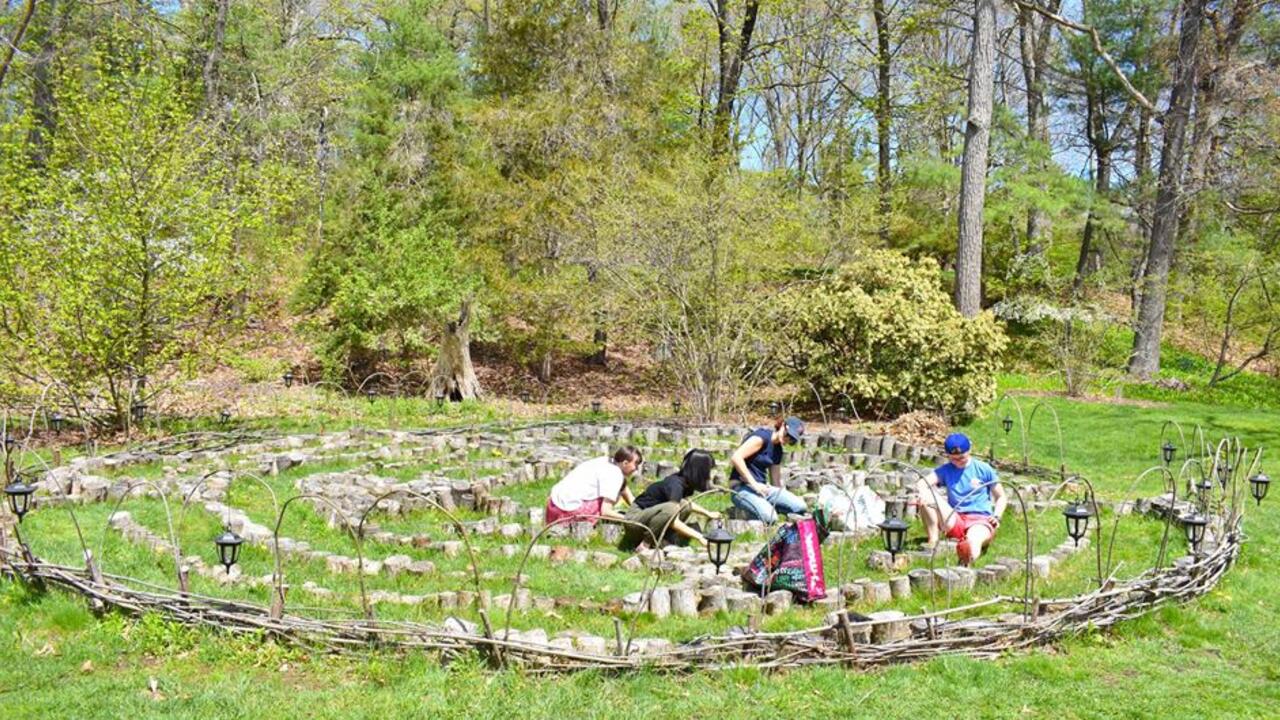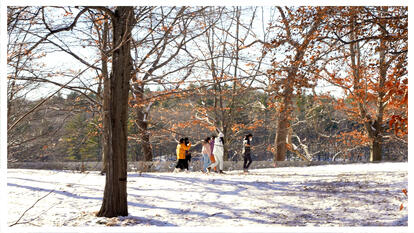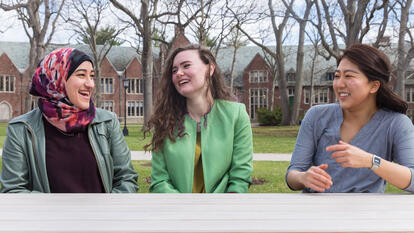Wellesley Welcomes Spring at the Labyrinth

Last year, Wellesley installed a Botanic Garden labyrinth just north of Paramecium Pond. It is 32 feet in diameter and is constructed from wood rounds and branches from trees that fell on campus. At night, it is illuminated by solar-powered lamps. Last weekend, during an event titled “Waking up the Labyrinth and Welcoming the Spring,” a group of Wellesley students and staff went to the labyrinth to celebrate renewal and growth as well as remove winter debris and fertilize the soil.
The labyrinth is meant to be a quiet space for contemplation, and it serves Wellesley’s community in several ways. From a spiritual perspective, it offers students “a place to find themselves time and time again,” said Tiffany Steinwert, Wellesley’s dean of religious and spiritual life. “Whether they come from a particular religious tradition or not, walking the labyrinth allows them to release that which burdens them, receive wisdom and insight out of the silence, and return once again to their daily lives refreshed and renewed by the time apart…if only for a few moments.”
Laura Beckler-Lewke '77, whose financial gift made the outdoor labyrinth possible, agrees. “I’m a person who does much better thinking, meditating, and praying if I’m moving. The labyrinth enables me to do that,” Becker-Lewke said at the dedication ceremony. “I also appreciate the fact that the labyrinth can be used from a religious perspective and a secular perspective.” Ten years ago Beckler-Lewke also supported the creation of an indoor labyrinth,which is painted on a large canvas that is unfurled on the floor of Houghton Chapel.
Suzanne Langridge, director of the College’s Paulson Initiative, said the labyrinth heightens the community’s awareness of Wellesley’s natural environment. “The labyrinth invites visitors to slow down as they enter and walk the path, but unlike indoor labyrinths, this labyrinth allows visitors to feel the movement of the damp earth beneath their feet in the spring, the sound of leaves underfoot in the fall, and the soft, cool feel of snow in the winter,” she said. “When they slow down, they also open up their senses to become more aware of the sounds of the birds and frogs, the smells of the soil and of the mint, and the taste of the blueberries that grow nearby.”



